An important finding: the presence of Sister Leonor González, CCVI, in Diego Rivera’s frescos at the National Cardiology Institute (1946-1951).
Written by Historian, Liliana Totoricagüena Raya.
“Love and Science at the service of the Heart”, this is what Diego Rivera expressed in his murals about the history of medicine at the National Cardiology Institute, but not only that, because as everybody knows, he also felt a predilection for women, food, and art. This is how we start our story regarding a person who admired Rivera, Sister Leonor González, a young and beautiful student at the recently founded Nursing School at the Cardiology Institute, whose vocation would be destined to the service of God and the service of the sick.
That same year, 1946, during her junior years in the Congregation, Enedina González Santacruz (Sister Leonor González), from Arandas, Jalisco, and a member of the Congregation of the Sisters of Charity of the Incarnate Word, was assigned to the diets area at the National Cardiology Institute, as instructed by the Nursing Department Director, Sister María de Alacoque Cerisola Salcido.
At 23 years of age, Sister Leonor was an expert in nutrition topics, because all the food had to be weighed by grams, and Mother Cerisola gave her the commission to also assign a good diet to Mr. Rivera while he was painting his iconic frescoes.
Sister Leonor Gonzalez, who is now 95 years old, remembers happily that she used to take cookies and milk to Master Rivera, because he was not willing to follow any type of diet.
Undoubtedly, for Master Rivera it was a very benevolent gesture from the Sisters to send him his lunch, and above all, if it was brought to him by the young and jovial Sister Leonor who captivated the artist with her youth and spiritual simplicity. However, Sister Leonor didn’t show any interest and kept her sight low following the rigorous rules of the Congregation, which stated that the Sisters should not have excessive communication with the laity or treat them directly, because obedience was a priority. This is evident in one of the dairies written by the Sisters in the Cardiology Community. This was written in the year 1950: “Day 16; Sister María Martha and Sister Guadalupe María came back from their Spiritual Exercises. Sister M. Leonor received her obedience document and stayed at the Provincial House”
Diego Rivera, who was not aware of the convent rules, asked Sister Leonor González to be one of the muses for his paintings and works, and he expressed his gratitude for the attentions he had received. “I paint what I paint, and I paint what I see. And I paint what I think, said Rivera”
However, Sister María de Alacoque Cerisola immediately ordered that Sister Leonor González would no longer be assigned to take breakfast to the painter: “Day 20. Sister Octavia was changed to the Provincial House, leaving a void in our Community. Our Provincial Mother came for supper with us accompanied by Sister María Alicia and Sister María Margil who will replace Sister M. Octavia and Sister Leonor. They were very well received”.
Then, Sister Leonor González Santacruz, was changed to the school in Saltillo in 1951. She was assigned to the boarding school section, as an assistant and she continued studying nursing, and after that, she didn’t know anything else about Rivera. Later, “Day 21 – S. Leonor received an obedience document for Muguerza Hospital”.
Later, she went back to work at the National Cardiology Institute, in the diets area, where she worked until 1968. She was outstanding as Director of the Diets Department for almost 8 years.
While Sister Leonor was working at the Cardiology Institute, from 1951 to 1968, the directors of the Institute, Dr. Ignacio Chávez and Dr. Manuel Vaquero planned the renovations of the building located at Calzada Piedad (Today, Avenida Cuauhtémoc, in Mexico City)
As it is urgent to change the Nursing School to the new building, and as the hospital direction offices have to move to their new section, at 8:00 pm, Dr. Chávez and his wife, Architect Villagrán, Dr. Rulfo, Mother Superior and Sister Martha, attended the blessing privately, as these two sections of the building are not fully completed yet. Father Iturbide M.S.S. celebrated the blessing with great inspiration. He first read in Spanish the beautiful prayer for the blessing of the hospital. This was very beautiful and he promised Dr. Chávez to come back to bless the rest of the building when it is completed. We hope this will happen soon.
After the inauguration of the new National Cardiology Institute in 1976 and its new headquarters were located at Juan Bandiano Street, in Tlalpan, Mexico City, Diego Rivera’s murals were also moved.
Four years later, Sister Leonor, an outstanding nurse, arrived at the new Cardiology headquarters serving successfully on the same post she had had before. “At noon we had a delicious banquet prepared by Sister Margarita María, Sister Octavia and Sister Leonor. It was very well prepared and we were accompanied by Mother Micaela, Our Provincial Mother and other Mothers and Sisters from the different Communities in the City.”
Once more, their encounter with Diego Rivera’s murals was overlooked. We will talk about the silence they have kept for a long time. However, what was not overlooked was Sister Leonor González’s outstanding career because in 1989 she received an acknowledgement for her successful career path from Dr. Ignacio Chávez Rivera.
Apparently, the Riveras would bring Sister Leonor good luck, because the painter paid homage to her in one of his frescoes and the Cardiology Director acknowledged her career in 1989.
In the field of recognitions, a great deal has been written about Diego Rivera’s works regarding the History of Cardiology, mentioning the figures that appear in the frescoes, their names and their contributions.
However, there was something that led me to a new questioning. Dr. Carlos Tajer wrote an article with the title: “How many women appear in Diego Rivera’s murals regarding The History of Cardiology?” In this text, the author mentions that four main feminine figures appear in the murals: In the first fresco there is only one woman with western features who is a patient and the doctors are taking care of her.

In the second mural, we can see three gentle ladies. In the upper section, Dr. Tajer depicted a Canadian Lady Doctor who contributed to Cardiology, and there is a “nurse” near her.
However, I had doubts about Dr. Tajer’s statement that this lady was merely a simple nurse, because I had checked the letter written by Dr. Ignacio Chávez to Diego Rivera in 1946, where he invited Rivera to paint the frescoes at the Institute. The following quote was very interesting for me: “Instead of pure art, instead of art for the sake of art, Diego Rivera, as well as his companions in this movement, José Clemente Orozco and David Alfaro Siqueiros, has created a social and combative art, striving always to depict beauty in the forms and to depict truth in their content”.
After reviewing the numerous boxes and files in the Archives of the Sisters of Charity of the Incarnate Word, I thought that perhaps the woman with the white uniform and the veil was precisely Sister Leonor González. I immediately went back to check the information and the photos of the first generation of Sisters and Religious Nurses who worked at the Cardiology Institute. My first surprise was the discovery that the nursing attire corresponded to the uniforms the Sisters wore in 1948.
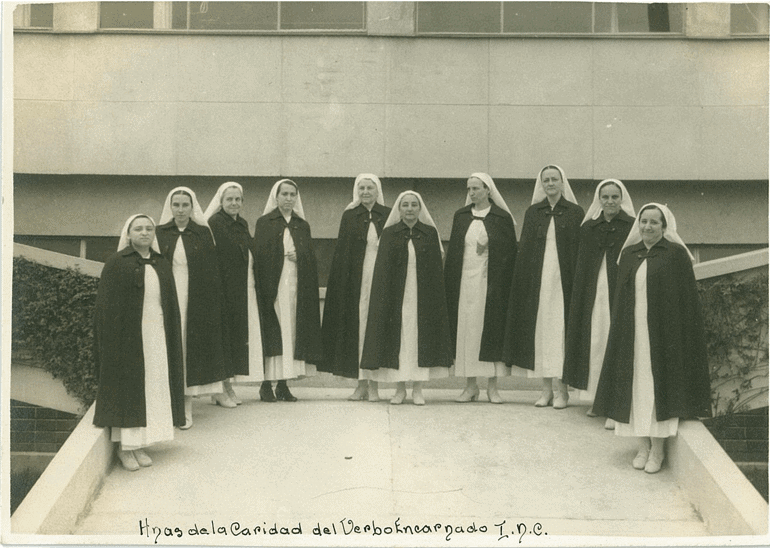
From left to right, Sister Tarcisia Villanueva, Sister Leonor Gónzalez, Sister Margarita Escalante, Sister Martha Inés Uranga, Sister Micaela Valdés, Sister María Alacoque Cerisola, Sister María de Ligorio Ureña, Sister Anunciata Camargo, Sister María Verónica Osorno, Sister María Dolorosa Romero

Detail of Sister Leonor González’ face

From left to right: Sister Tarcisia Villanueva, Sister Margarita Escalante, Sister Leonor González, Sister Guadalupe Cerisola, Sister Georgina Lupao, Sister María de Ligorio, Sister Anunciata Camargo, Sister María Verónica Osorno, Sister Martha Inés Uranga, Sister María Ruth Garza (In the background we see the former building of the National Cardiology Institute)
Later, I received collaboration from Biologist, Eréndira del Ángel García, who is in charge of the matters handled by the General Secretariat of the Congregation. She provided some data from Sister Leonor González’ ministry files and I could see that she was a student at the National Cardiology Institute Nursing School from 1946 to 1951, which confirmed the information I had.

Based on the previous information I had and on the data rebuilt through a series of notes in Sister Leonor’s files and also in the correspondence and photos of that period, and above all, based on the journal written by the Sisters in the Cardiology Community during the second half of the twentieth century and also by comparing the details of the images that were superposed, we find an agreement in the symmetry of the face.

In addition, several witnesses and several of Sister Leonor González’s colleagues asserted that she is the nurse in the fresco. Her colleagues Sister Ana María Pingarrón, Sister Martha Laura Gaona and Sister Ana Luisa Prieto who immediately confirmed the great resemblance between Sister Leonor and the nurse in the fresco.
Finally, Sister Leonor, with the collaboration of some of her companions, recognized herself in the fresco, so I thought it was appropriate to mention that if Diego Rivera were alive today, he would not doubt to pay homage to her in his works, but now to celebrate her jubilee year on her 75th anniversary in Religious Life.
Archive Sources Historical Archive of the Congregation of the Sisters of Charity of the Incarnate Word [Archivo Histórico de la Congregación de las Hermanas de la Caridad del Verbo Encarnado (En adelante AHCHCVE), Cardiology Jurnal 1944-1962, health ministry, series on the Natioal Cardiology Insitute, subseries on correspondence, history, potos, anniversaries, boxes 6-8, 1944-1984. Congregational Directoy, 2019-2020 Document regading Sister Leonor González Santacruz’s ministry experience, 1946-1987 Bibliographical and Newspaper References Bulletin of the Society of Interns and Scholarship Holders at the National Cardiology Institute, Mexico, 1976-1977 Chávez, Ignacio, “Letter to Diego”, 1946, [On line] https://smcardiologia.org.mx/diego_rivera.asp 28/10/2020 ---------------------- Speech given on the inauguration of the new National Cardiology Institute, Mexico, 17/10/1976 The National Cardiology Institute Ignacio Chávez, At the End of the Second Millennium, volume 2, National Cardiology Institute, Mexico, 1998 The National Cardiology Institute ten years after its foundation by Dr. Ignacio Chávez, Mexico, 1954 Diego Rivera, collection, Art Genius, Susaeta, Mexico, 2002 Jasso Soto María Elena, María Elena Hernández Treviño and Emma Téllez Muro, “Nursing, philosophy and mystic of the National Cardiology Institute Ignacio Chávez”, in the Mexican Magazine of Cardiology Nursing, volume 7, number 14, January-December, 1999 Doctor Ignacio Chávez Professional Jubilee, Nacional Cardiology Institute, Mexico, 1970 National Cardiology Institute, Golden book, Mexico, 1946 Tajer, Carlos, “How many women appear in Diego Rivera’s murals regarding the Hisoory of Carciology? [On line] https://www.intramed.net/contenidover.asp?contenidoid=94010#:~:text=Superadas%20varias%20confusiones%20colectivas%2C%20concluimos,estudio%20de%20las%20cardiopat%C3%ADas%20cong%C3%A9nitas.28/10/2020 White, E. B., I Paint what I See, [On line] http://www.andaryver.mx/arte/poesia/yo-pinto-lo-que-veo/ 28/10/2020


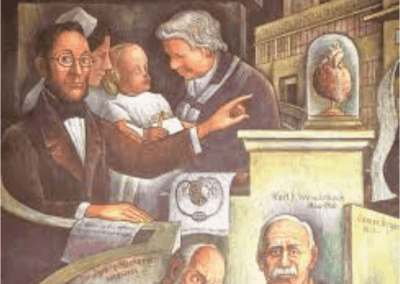
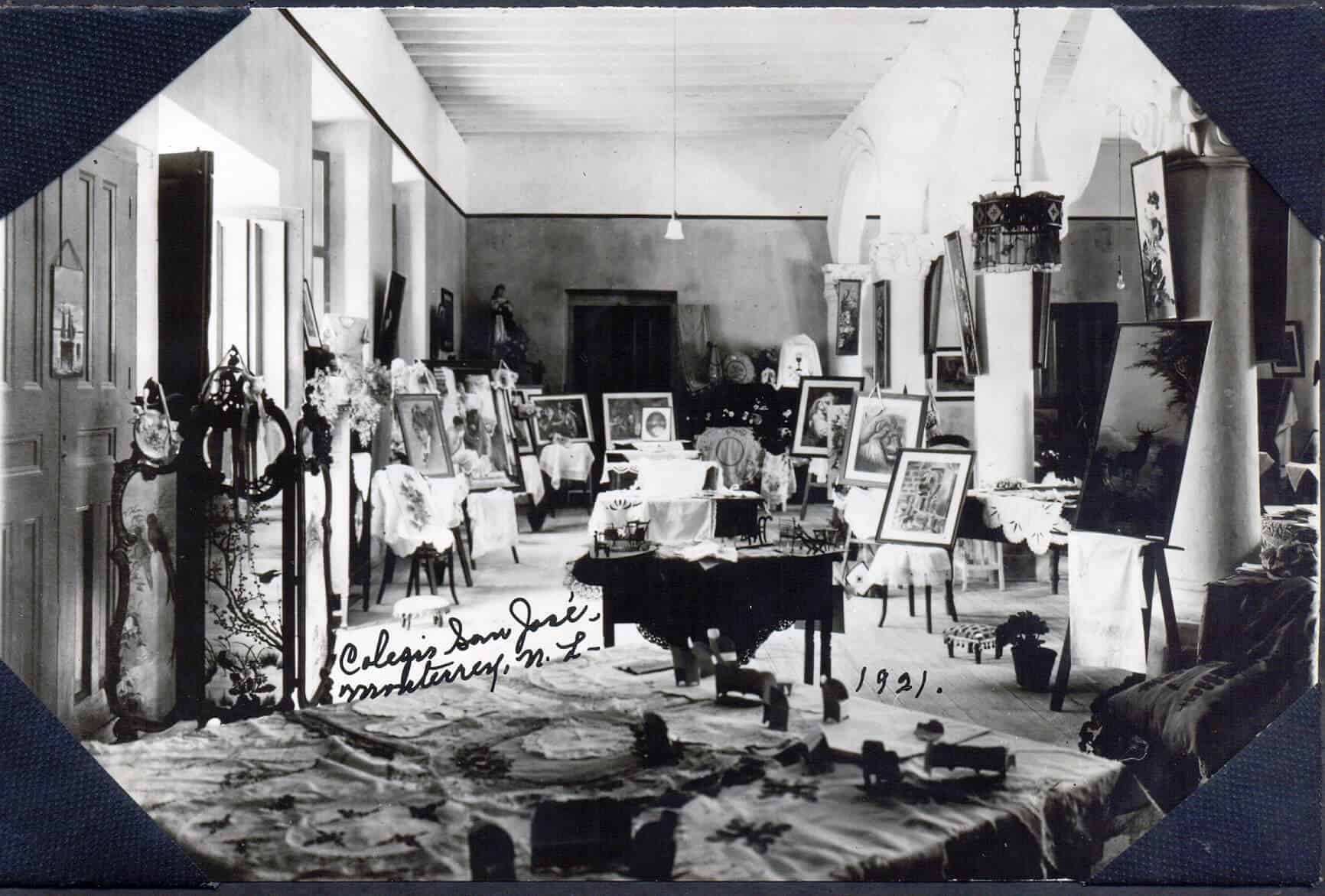
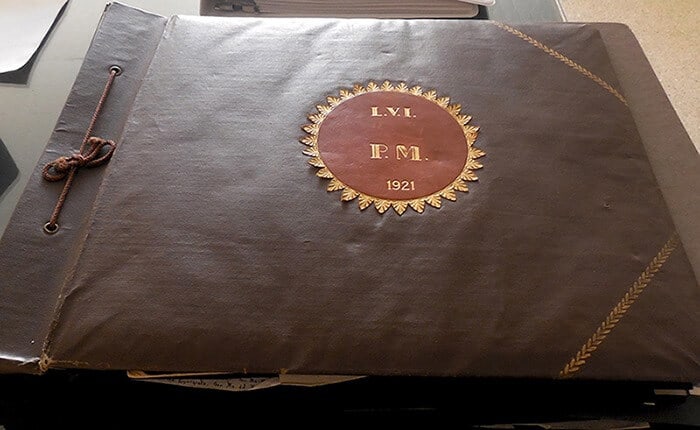

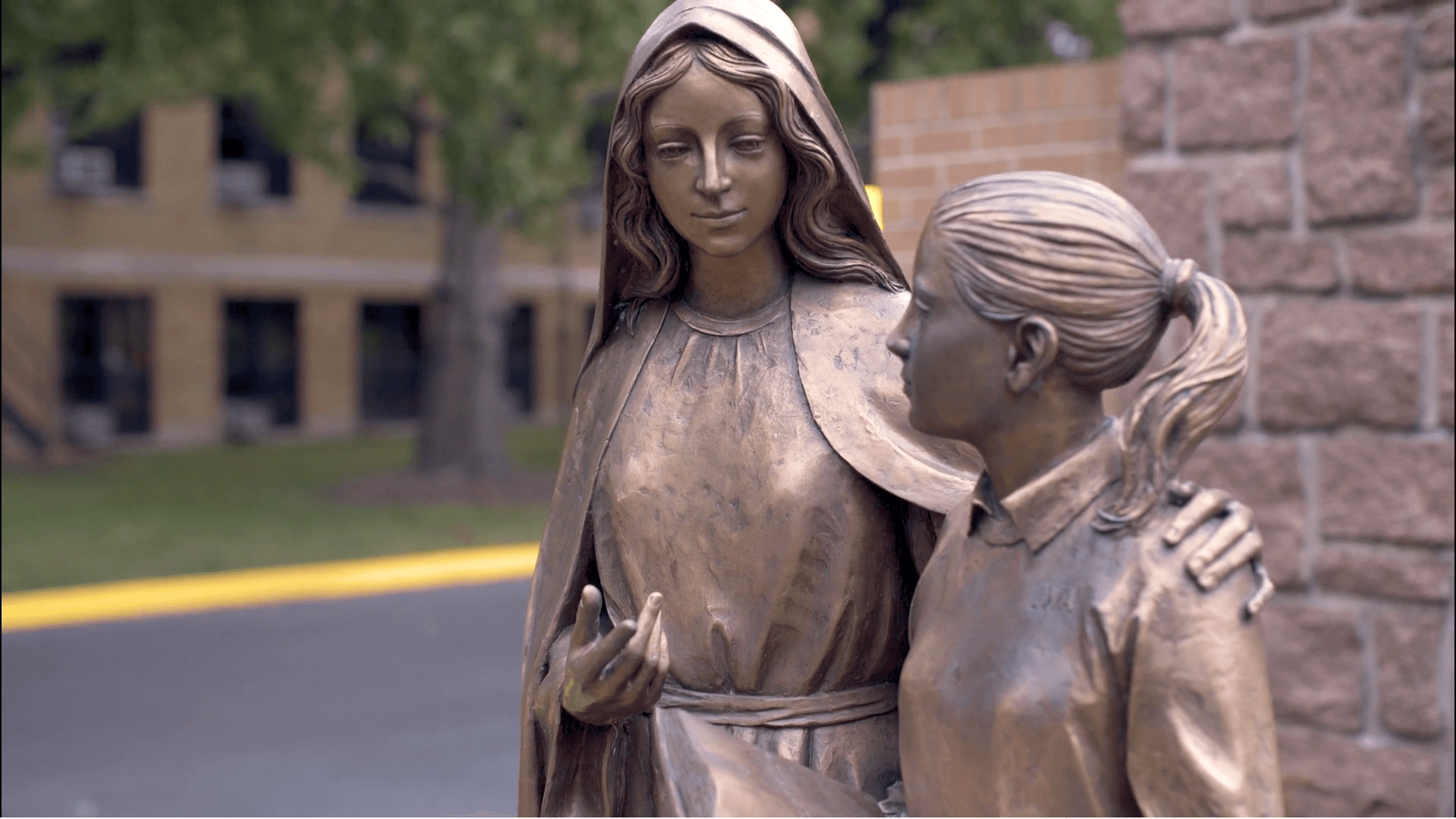

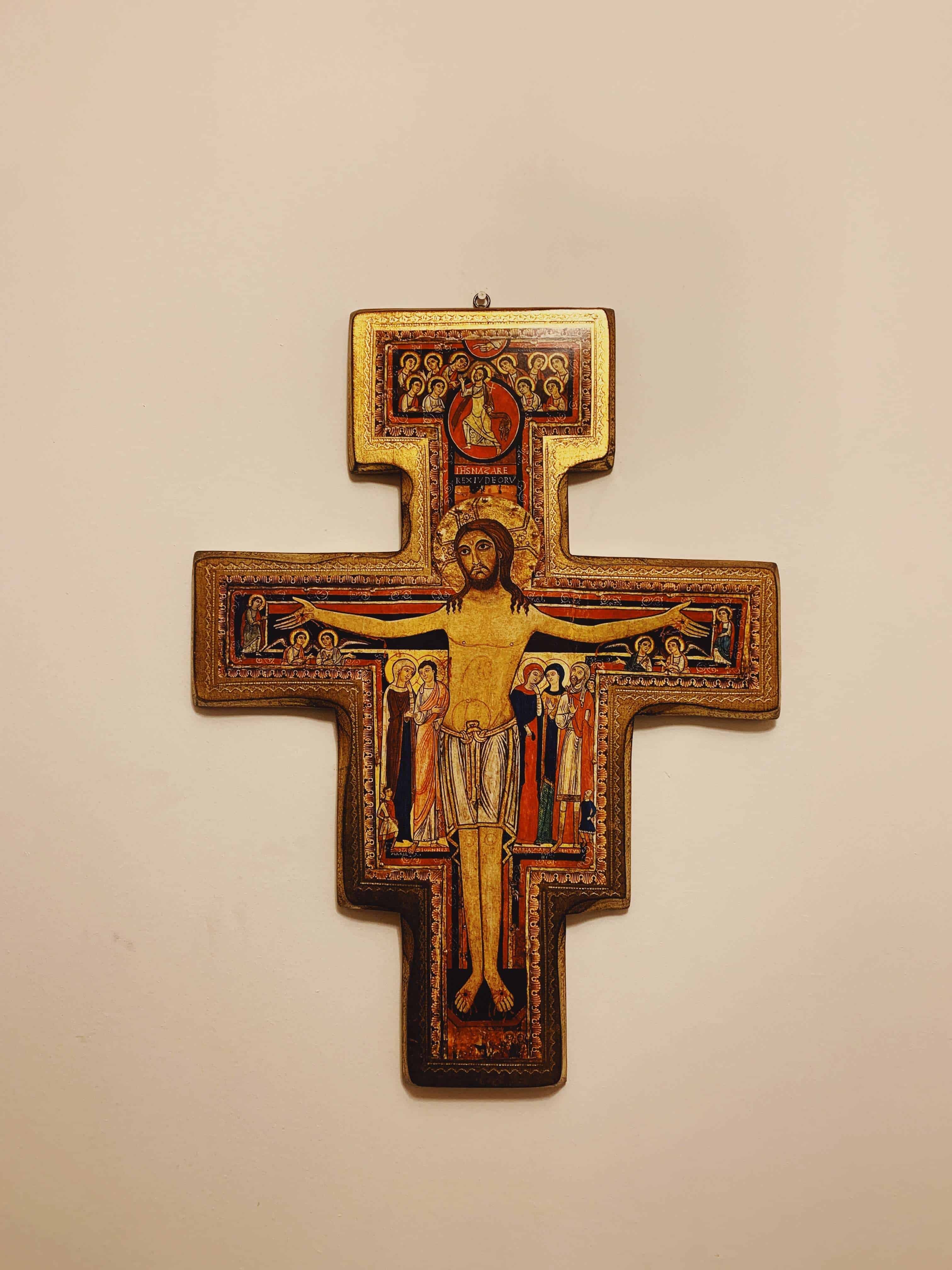
0 Comments